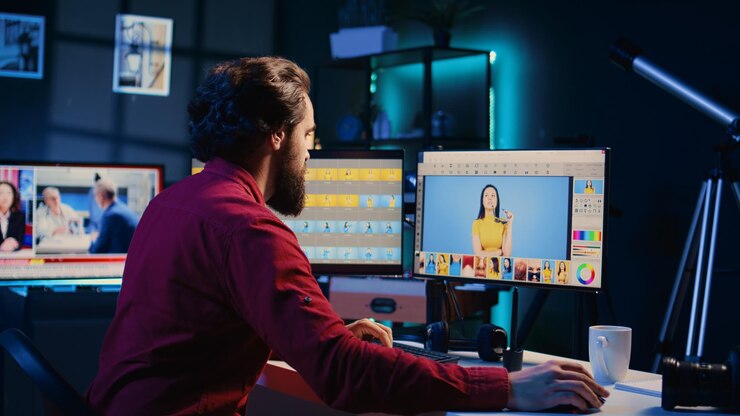
So, how are the stunning animations that we see in our day-to-day lives made up of?
Yes! You must have guessed it by now! It’s the magic of Adobe After Effects!
Adobe Effects is a revolutionary software tool that has transformed the world of graphics and visual effects. The software offers its users a wide range of features and benefits, sparking new possibilities in the industry.
This article will explore its key features, benefits, and more about the dynamic software!
Overview of Adobe After Effects
In simple terms, Adobe After Effects is a digital visual effects and motion graphics-making application. It is mainly used for post-production, that is, for animation, video production, and filmmaking.
Now that you have learned the basic information about Adobe After Effects, you might wonder about its key features and common uses!
So, here comes a tiny but essential information about the key details and its uses:
Key Features:
- Creates 3D Graphics Creation, motion graphics, and animation.
- Visual effects and composting.
- Tracking and Stabilization.
- Kinetic Typography.
Common Uses:
- Animate logos and short films
- For Advertising and branding purposes
- Music videos
- Infographics
- Visualization
- Special effects for videos and films
- Creating title sequences
Well, now you must know how powerful Adobe After Effects is! However, more is to come because it also smoothly integrates with other Adobe Creative and Suite applications, including Adobe Premiere Pro, Photoshop, and Illustrator.
Adobe After Effects Role in Motion Graphics and Visual Effects
Motion Graphics Design:
Adobe After Effects plays a significant role in motion graphics and visual effects. Here are some of the key points:
- Helps to have precise control over movement, scale, and control.
- Acts as a graphic editor for fine-tuning animation curves.
- Useful in shaping layers for creating vector graphics.
- Practical tools for text animation.
- Assists in creating hierarchical relationships between objects.
- Adds depth and perspective to designs.
- Tools for color correction, distortion, and stylization.
- Dynamic importing with other Adobe applications.
- Exporting options for different platforms.
Visual Effects Production:
- Helps to combine multiple layers of CGI elements.
- Quick to integrate 3D renders with live-action footage.
- Creates particle-based effects like smoke, dust, and fire.
- Helps to remove green or blue screens.
- Stabilizes shaky footage.
- Remove unwanted elements from the footage.
- Enhances damaged footage.
- Practical time-lapse and slow-motion effects.
4. Industry Applications of Adobe After Effects
Advertising and Marketing:
You have rarely encountered advertisements in this digital world, so let me disclose it all today!
Companies use Adobe After Effects to make their video content more engaging and visually appealing. Around 11% of people who use this application are from the marketing and advertising sector.
Film and Television:
Similarly, professionals in the film and television industry use Adobe After Effects to add effects, animate texts, and enhance video footage using techniques like rotoscoping, tracking, and keying.
It helps produce high-quality content that we later watch in cinemas and on various OTT platforms. The software also sequences complex visual effects as part of the post-production workflow.
5. How to Get Started with Adobe After Effects
Here’s a brief guide on how to get started with Adobe After Effects:
- Create a new project. Click “New Composition” and set the resolution, frame rate, and duration.
- Import the required videos, images, and audio.
- Drag layers from the Timeline to the Composition panel to add the imported media.
- Several tools, such as Text and Rotation Tool, are available to edit your layers.
- Add animations and effects by applying keyframes to change the layer properties.
- Now, “Save” your project, followed by exporting your composition.
Pro Tip: Start experimenting with the tools. You might make mistakes at first, but soon, you can create professional motion graphics quickly.
In conclusion, Adobe After Effects is a versatile and dominant software used for branding, advertising marketing, filmmaking, and Television.
It creates magic on the screens of Television and cinemas, and its feature to integrate with other Adobe applications makes it a valuable tool for professionals in various industries.
Its feature to integrate with other Adobe applications makes it easy for professionals.





